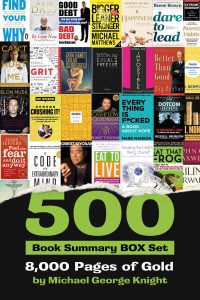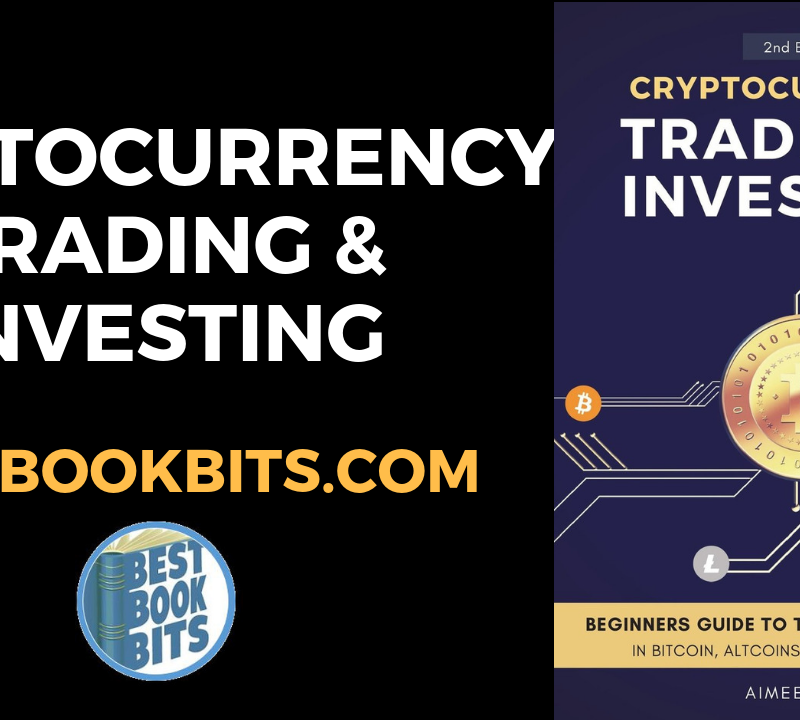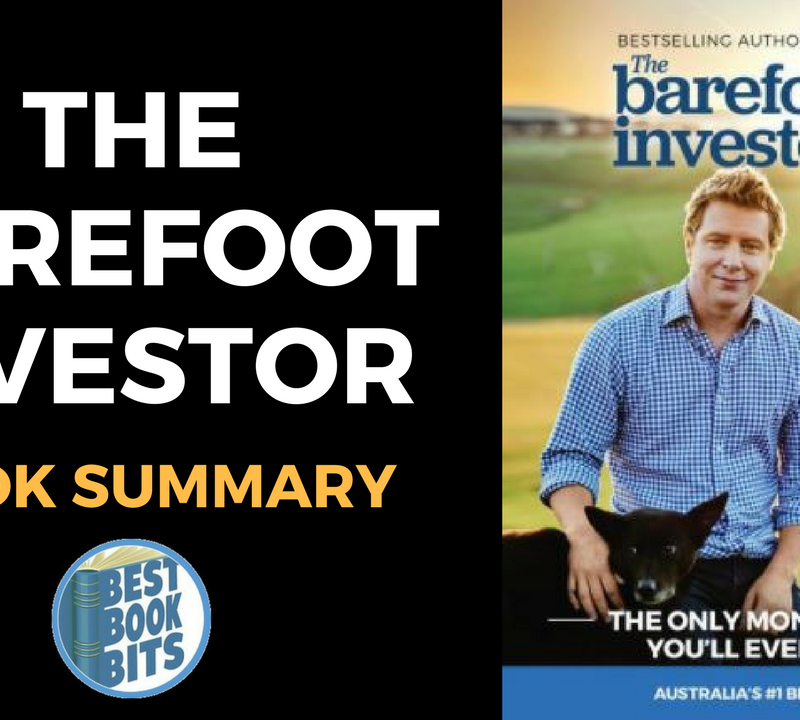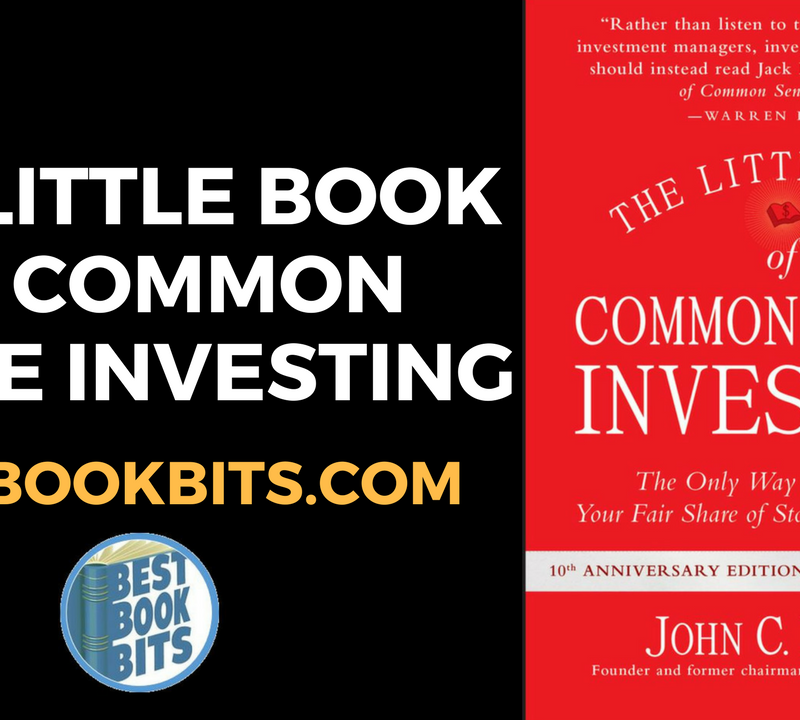Have you ever thought about writing a book, starting a YouTube Channel, starting a Podcast or starting a business? My name is Michael Knight founder of Bestbookbits. Apart from creating the worlds largest free book summary bestbookbits, I run a successful YouTube Channel with 60k+ subs, a global top 40 podcast and author of “Success in 50 Steps.” I consult with new content creators that want to write a book, start and grow a YouTube Channel or a Podcast Show. To work with me on getting this done with you, book a free call here.
FOLLOW US HERE > |YouTube |Spotify | Instagram | Facebook | Newsletter | Website
Now we at bestbookbits have created something special for you. I have packaged the wisdom of $13,000 of books into a box set almanac of 500 book summaries in 17 volume’s 8,500 page MONSTER BOOK. Plus a bonus stack of 681+ Downloaded MP3 Book Summaries. Click here to grab it now.
Chapter 1: Investment vs. Speculation (and the Defensive vs. Enterprising Investor)
Graham defines an investment (as opposed to speculation) as: one which, upon thorough analysis, promises safety of principal and an adequate return. Operations not meeting those requirements are speculative. (p.18)
This is a fundamental concept in his approach, and drawing a line between intelligent investing activity and speculation is a recurring theme. According to Graham investment consists of three equal parts:
- Thorough fundamental analysis of companies in which you invest.
- Deliberately protecting yourself against serious losses.
- Aspiring to “adequate”, not extraordinary, performance.
Graham suggests two possible investment approaches:
- Defensive: “[an investor] interested chiefly in safety plus freedom from bother” (p.22)
- Enterprising:You put a lot of time and effort into your investment operations.
The enterprising approach is physically and intellectually taxing, while the defensive approach is emotionally demanding (since it requires detachment from market panic).
These approaches are not binary – you can find a blend which suits your personality (see Chapters 4-5).
Chapter 2: The Investor and Inflation
You must understand inflation, specifically:
- You must measure your investing success not just by what you make, but by how much you keep after inflation.
- Inflation is not going away, and it must always be factored into your risk analysis.
- Stocks tend to outpace inflation 80% of the time (p.61).
- To bolster your defenses against inflation, you can branch out beyond stocks to: REITs (Real Estate Investment Trusts) and TIPS (Treasury Inflation-Protected Securities).
Chapter 3: Stock Market History
It is a common mistake to forecast the future (specifically stock prices) exclusively by extrapolating the past. The reasons why people fall into making this mistake are:
- Buying into the hype of strong Bull markets.
- Trusting so-called experts too much (and not doing their own homework).
- Not staying humble about forecasting powers.
The value of any investment is, and always must be, a function of the price you pay for it.(p.83)
Chapter 4-5: Defensive Investor Principles
The decision about how defensive/enterprising your approach is should be based not on your appetite for risk, but rather on your willingness to put time and effort into your portfolio.
Your risk appetite should not be based on your age, but on your circumstances – are people depending on you? Are you self employed? How much can you afford to lose?
- Graham insists that everyone should keep a minimum of 25% in bonds. That cushion, he argues, “will give you the courage to keep the rest of your money in stocks even when stocks sink.” (i.e. He also advises a maximum of 75% of total assets in stocks). (p.103)
- “The more familiar a stock is, the more likely it is to turn a defensive investor into a lazy one” (p.127)
- “Buying stocks in tiny increments for years on end can set off big tax headaches. If you are not prepared to keep a permanent and exhaustively detailed record of your purchases, do not buy in the first place.” (p.129)
- “Don’t invest in only one stock – or even just a handful of stocks […] Graham’s guideline of owning between 10 and 30 stocks remains a good starting point for investors who want to pick their own stocks, but you must make sure you are not overexposed to one industry” (p.129)
- “If, after you set up an autopilot [defensive] portfolio, you find yourself trading more than twice a year, or spending more than an hour or two per month, total, on your investments – then something has gone badly wrong. […] Do not let the ease and up-to-the minute feel of the Internet seduce you into becoming a speculator” (p.129)
Chapter 6-7: Portfolio Policy for the Enterprising Investor
- Day trading carries extreme risk – avoid.
- IPOs are frequently overpriced (“It’s Probably Overpriced”) – avoid.
- Treat junk bonds with scepticism
- Exercise extreme caution buying foreign bonds, annual operating expenses should be no higher than 1.25% (p.148)
- A great company is not a great investment if you pay too much for the stock: The bigger firms get, the slower they grow. When price/earnings ratios go above 25-30, then the risk is too high.
- Always be on the look out for temporary unpopularity which enables you to buy a great company at a good price.
“The intelligent investor, however, gets interested in big growth stocks not when they are at their most popular – but when something goes wrong” (p.183).
- Diversify your portfolio – it is advisable to buy foreign stocks – you never know what the future will hold at home and abroad.
Chapter 8: The Investor and Market Fluctuations
- “If you want to speculate, do so with your eyes open, knowing that you will probably lose money in the end; be sure to limit the amount at risk and to separate it completely from your investment program” (p.188). I.e. separate the money completely.
- “A stock does not become a sound investment merely because it can be bought at close to its asset value. The investor should demand, in addition, a satisfactory ratio of earnings to price, a sufficiently strong financial position, and the prospect that its earnings will at least be maintained over the years.” (p.200)
- There is a paradox in that the more successful the company, the greater the fluctuations in the price of its shares. This really means that, in a very real sense, the better the quality of the common stock, the more speculative, it is likely to be.
- On investment vs. speculation: The speculator’s primary interest lies in anticipating and profiting from market fluctuations. The investor’s primary interest lies in acquiring suitable securities at suitable prices.” (p.205)
Have you ever thought about writing a book, starting a YouTube Channel, starting a Podcast or starting a business? My name is Michael Knight founder of Bestbookbits. Apart from creating the worlds largest free book summary bestbookbits, I run a successful YouTube Channel with 60k+ subs, a global top 40 podcast and author of “Success in 50 Steps.” I consult with new content creators that want to write a book, start and grow a YouTube Channel or a Podcast Show. To work with me on getting this done with you, book a free call here.
FOLLOW US HERE > |YouTube |Spotify | Instagram | Facebook | Newsletter | Website
Now we at bestbookbits have created something special for you. I have packaged the wisdom of $13,000 of books into a box set almanac of 500 book summaries in 17 volume’s 8,500 page MONSTER BOOK. Plus a bonus stack of 681+ Downloaded MP3 Book Summaries. Click here to grab it now.
Chapter 9: Investing in Investment Funds
Exploring research into investment funds, key points to take from this chapter are:
- The average fund does not pick stocks well enough to overcome its costs of researching and trading them.
- The higher a fund’s expenses, the lower its returns.
- The more frequently a fund trades its stocks, the less it tends to earn.
- Highly volatile funds, which bounce up and down more than average, are likely to stay volatile
- Funds with high past returns are unlikely to remain winners for long
Later in his life, Graham praised index funds as the best choice for individual investors, as does Warren Buffett (p.249), that said, the chapter still explores mutual funds, and the things to look for when choosing one:
- Their managers are the biggest shareholders.
- They are cheap.
- They dare to be different.
- They shut the door (i.e. they don’t take on too many clients).
- They don’t advertise (clients should come to them). (p.250)
The order you should look at a mutual fund (the opposite way to how most buyers do it):
- Fund’s expenses
- Riskiness of the fund
- Manager’s reputation
- Past performance
Chapter 10: The Investor and his Advisors
This chapter deals with how to seek and select help with your investments. The major caveat with seeking a full-time financial adviser is that you need at least $100,000 to invest (p.277). Until you reach this point, Graham suggests low-cost index funds.
In terms of selecting an adviser, the types of things you want to know about them are:
- What is your investing philosophy?
- Do you focus solely on asset management, or do you also advise on taxes, estate and retirement planning, budgeting and debt management, and insurance?
- Do you use stocks or mutual funds?
- How will you track and report my progress? Do you provide a checklist I can use to monitor the implementation of any financial plan we develop?
- Do you use technical analysis?
- Do you use market timing?
A ‘yes’ to either of the last two questions is a ‘no’ signal to you. (p.276). Other red flags include advisers who have fees that will consume more than 1% of your assets annually, investors who promise an annual return higher than 10% and advisers who will not show you their Form ADV (this is a professional requirement).
Chapter 11-12: Security Analysis for the Lay Investor – General Approach and Per-Share Earnings
The purpose of security analysis is to estimate a value of a given stock which can then be compared with the current price to determine whether or not the security is an attractive purchase.
Graham makes it clear that any kind of security analysis which requires more than basic arithmetic and algebra is likely to be flawed or bogus.
What should you consider to avoid overpaying for a company?
- Long term prospects
- Management quality
- Financial strength and capital structure
- Dividend record
- Current dividend rate
Chapter 14-15: Stock Selection for the Defensive/Enterprising Investor
The enterprising investor approach is built upon the same foundations as that of the defensive investor, but with greater flexibility:
“[…] apply the various tests of quality and price-reasonableness along the lines we have proposed for the defensive investor. But they [enterprising investors] should be less inflexible, permitting a considerable plus factor to offset a small black mark in another.” (p.382).
Guidelines for the Enterprising Investor (similar to those for the defensive investor, but slightly more leeway):
- Financial condition (a) Current assets at least 1.5 times current liabilities, and (b) debt not more than 110% of net current assets (for industrial companies)
- Earnings stability: No deficit in the last five years
- Dividend record: Some current dividend.
- Earnings growth: Last year’s earnings more than those of 1966 [i.e. previous year]
- Price: Less than 120% net tangible assets. (p.386)
Chapter 16: Convertible Issues and Warrants
Discusses the pros/cons of convertible bonds – investments which behave like stocks and work like options: you can keep the bond and earn interest on it, or you can exchange it for the common stock of the issuing company at a predetermined ratio.
“Wall Street’s salespeople often describe convertible bonds as a ‘best of both worlds’ investment. But the intelligent investor will quickly realize that convertibles offer less income and more risk than most other bonds.” (p.419)
Verdict: Unless you are dead set on only holding bonds, convertible bonds aren’t a great choice.
Chapter 19: Shareholders and Managements
- A stock split (technically called a stock dividend, though rarely called this as it is confusing) is a restatement of the common-stock structure “presumably because [the resulting] lower price range would be more acceptable to old and new shareholders” (p.493)
- A proper stock dividend (commonly called a dividend) is one that is paid to shareholders to give them tangible evidence of earnings.
“It is our belief that shareholders should demand of their managements either a normal [dividend] payout of earnings -on the order, say, of two-thirds- or else a clear-cut demonstration that the reinvested profits have produced a satisfactory increase in per-share earnings.” (p.492)
Chapter 20: “Margin of Safety” as the Central Concept of Investment
Graham’s concept of the margin of safety is built on arithmetic reasoning from statistical data – i.e. understanding the intrinsic value of investments using the techniques from earlier chapters. The intelligent investor must focus on getting their analysis right, but also on understanding and taking precautions against the inevitable event of making errors.
“In the ordinary common stock, bought for investment under normal conditions, the margin of safety lies in an expected earning power considerably above the going rate for bonds.” (p.514)
“The margin-of-safety idea becomes much more evident when we apply it to the field of undervalued or bargain securities. We have here, by definition, a favorable difference between price on the one hand and indicated or appraised value on the other. That difference is the safety margin.” (p.518).
There is a close logical connection between the concept of a safety margin and the principle of diversification […] for the margin guarantees only that he has a better chance for profit than for loss – not that loss is impossible (p.518)
Have you ever thought about writing a book, starting a YouTube Channel, starting a Podcast or starting a business? My name is Michael Knight founder of Bestbookbits. Apart from creating the worlds largest free book summary bestbookbits, I run a successful YouTube Channel with 60k+ subs, a global top 40 podcast and author of “Success in 50 Steps.” I consult with new content creators that want to write a book, start and grow a YouTube Channel or a Podcast Show. To work with me on getting this done with you, book a free call here.
FOLLOW US HERE > |YouTube |Spotify | Instagram | Facebook | Newsletter | Website
Now we at bestbookbits have created something special for you. I have packaged the wisdom of $13,000 of books into a box set almanac of 500 book summaries in 17 volume’s 8,500 page MONSTER BOOK. Plus a bonus stack of 681+ Downloaded MP3 Book Summaries. Click here to grab it now.














